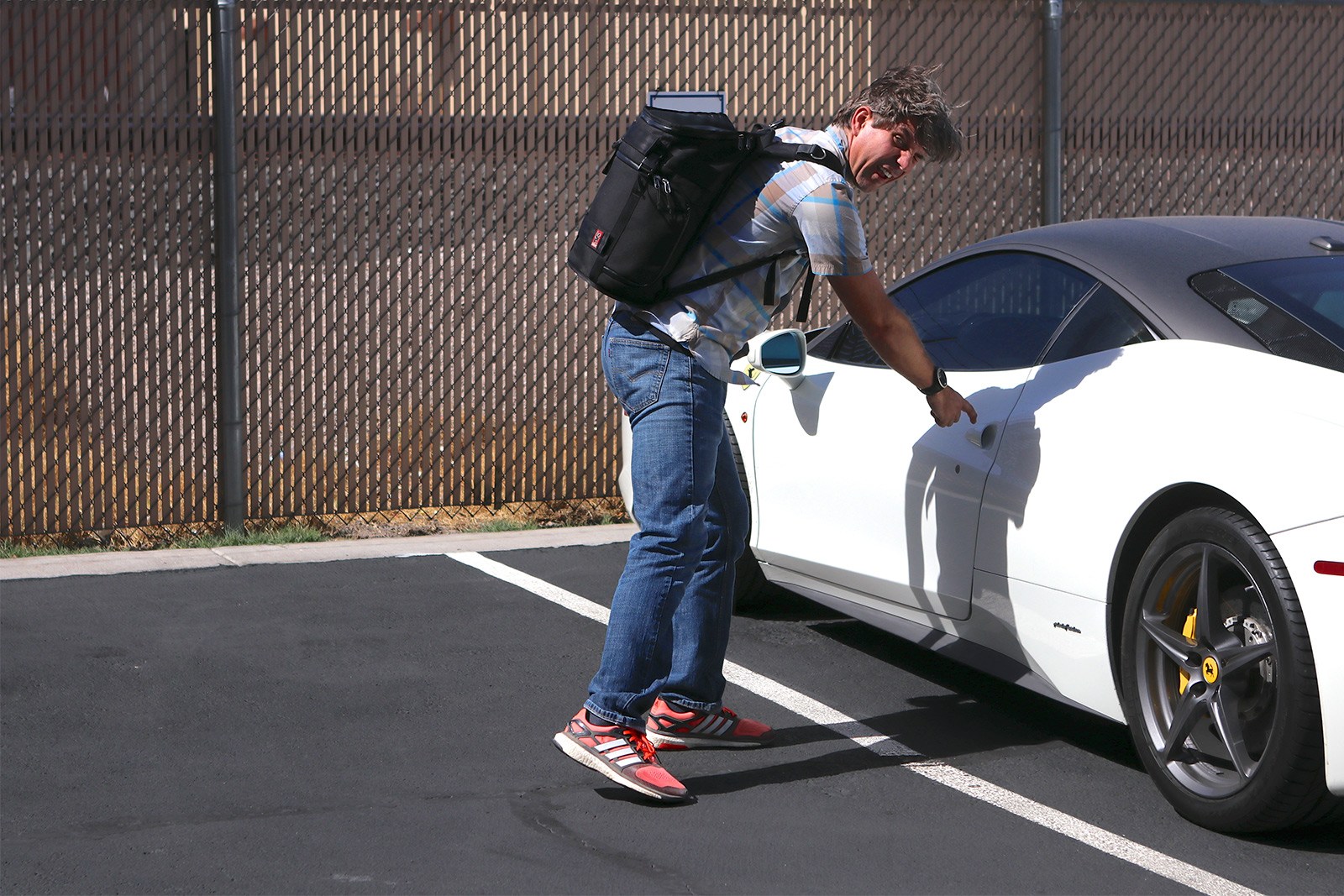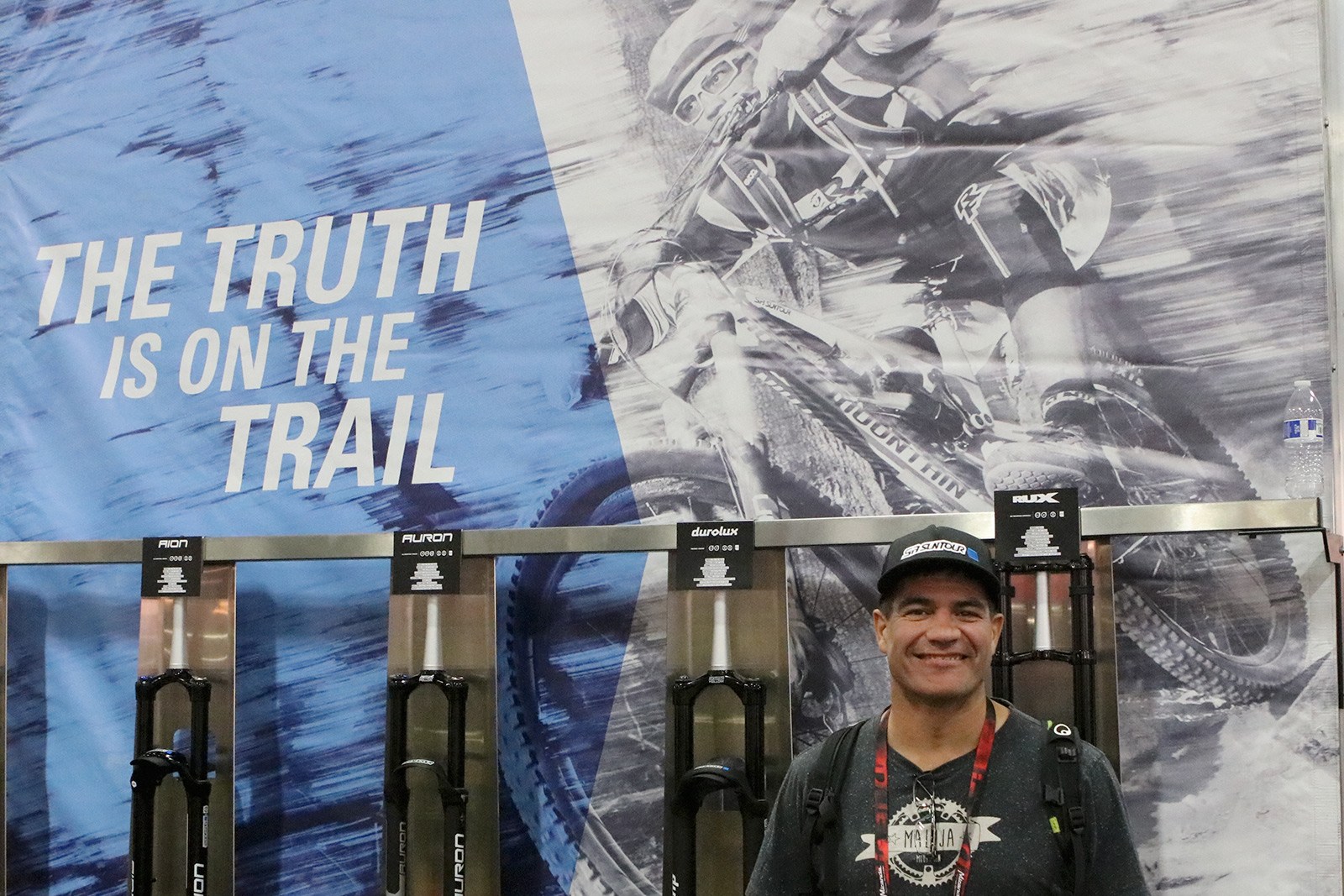
What Development Has Benefitted Riders Most?
After invoking the ghost of mountain biking future, I wanted to talk about progress. I’m not Joe Consumer at this point so I’m clear that it’s much easier for me to look on the bright side of mountain bicycles. I get to ride bikes, essentially as demos, for weeks at time. I often invoke primae noctis. When a bike that I’m not going to test arrives, I build it up and have my way with it. And if my first experience is memorable, and the tester doesn’t claim it fast enough, I have another go.
Even in this context, I have anxiety about choosing a bike to spend money on. If I’m buying a bike it’s essential that I can use it as a platform for testing in the future. The last bike I bought was a Giant Reign. It’s a fantastic bike and it made me a better rider everywhere I rode it. But it didn’t have Boost spacing so for my purposes it was obsolete after a year.
If it’s problematic for me, it’s a minefield for your average rider. And while I’m clear the term ‘average consumer’ doesn’t apply to most of our readers, I’m aware that the struggle is real.
What development in mountain bikes over the past five years has provided the most benefit to riders?
And yet bikes are better. The 29 lb bike that pedals up efficiently and descends like a downhill bike from 2010 is no fantasy. We have become jaded about new technology but how many of you would give up any of the developments of the past five years?
With this in mind, I asked a selection of insiders about the best things; the development of the last five years that have served up the most benefit for mountain bikers. It was telling that the first five answers were completely different. So many improvements have rained down on us that it isn’t clear what has made us most wet. Bikes have changed a lot. As a result, bikes have made leaps and bounds.

Vernon Felton – Cycling Media Hack – pinkbike.com
“It’s not a radical technology change. I’d say that if you are looking at the new crop of cross country bikes like the Kona Hei Hei, the idea that what people conceived of as ‘super aggressive geometry,’ I guess we’re talking about steeper seat tubes, longer top tubes, shorter stems, what Gary Fisher was pushing all those years back, to see that moving into several genres of mountain bikes, cross country, trail and all mountain. They’re all better for that. I think we’re getting to the point where there’s a tipping point where it gets a little silly. When everyone is trying to make an enduro bike. Not good. They’re not enduro racers. But, you look at those cross country bikes that are coming out right now, I could actually want one and I could ride it all over the place. A 4″ travel bike – it’s sick now because there’s no compromise on it. Every bike should be that way. And it’s cool kind of anywhere. As long as we don’t get wheelbases like 47.5-48″ on medium bikes, which is kind of happening, and going a little far. I think geometry, the least sexy thing, is the biggest change. And that’s awesome.”

Todd Bischoff – Veteran of E13, Trek, SRAM, Truvativ and Burley Design – Currently looking for a rad gig in product or brand management.
“Long travel bikes have gotten really lightweight and really rideable. You can pick just about any brand of bike and you’re going to a pretty decent riding bike now. Five or 10 years ago that was for sure not the case but now the consumer can go out and buy a long travel bike and it’s going to ride pretty nice. They can ride all day on that bike. On a 6″ bike 5 years ago you didn’t want to spend all day on that bike. But now you can do that. And for the most part, the equipment is durable that it’s going to stick with you and not cause a lot of trouble.”

Wesley Meyer – Evergreen MTB Alliance, REI – operations
“In mountain bikes, I would say lightweight suspension. Air shocks, air forks, and enough design to go with it. I was surprising myself the other day riding a 6″ travel bike up a road for 1000 metres and then you come down and it’s basically a downhill bike from a few years ago. But it wasn’t that hard to ride up. And they are reliable and don’t squeak most of the time and seem to put up with it day after day without cracking. Things aren’t shearing off. That’s the biggest difference for me. Having that bike I can ride kind of everywhere now. ”

Brett Tippie – One of the godfathers of Freeride (don’t tell Wade), Director of Good times
“The pretty colours! Fashion and function! (insert Tippie cackle here) In the last few years, I think the dropper post is awesome. I like wider rims. Suspension just gets plusher and plusher. I’m just stoked to see a 5-6″ travel trail bikes are so prevalent and people are getting out there and ‘mountain biking.’ I’m not saying give up a DH bike or a cross country bike – it’s great to have a quiver if you can afford it or if you are sponsored obviously. But if you are going to have one bike, there’s a good bike that can do it all. I think it’s cool to be able to ride everything on one bike. I love my DH bike, don’t get me wrong, but it’s nice to have a multi-purpose everything tool.”

Brandon Watts – Publisher and founder – Freehub Mag
“From the intro to mountain biking standpoint I feel like geometry, having something a little more slacked out and forgiving, suspension technology making it smoother. And I also think the Plus size tires make it easier for someone who doesn’t have very much skill on a bicycle at all to get away with more and be more comfortable out of the gate. Those are some of the things that allow for a bigger margin of error. Probably geometry is the one that I see the most brands getting behind and being able to ride everything on one bike instead of buying an XC bike and buying a DH bike you can buy a trail bike and you can go far and go short so that’s probably the number one. ”

Mike Kazimer – Tech editor – pinkbike.com
“I think 1by drivetrains in general because we don’t have to deal with front derailleurs anymore. It’s a benefit for mechanics. For anyone who’s worked in a shop, front derailleurs were a hassle. Now it’s trickled down to an affordable point. I think that’s the biggest benefit there.”

Kelli Sherbinin – President – Endless Biking (#goodtimesonbikes)
“The dropper post. The terrain that we ride, we go up and down all the time and before it was hard if you had to adjust the seat. Even now, most people have dropper posts, and when one person doesn’t have one it’s mind-boggling how much of a pain in the ass it is.”

Pete Stace-Smith – Brand Ambassador – Norco Bikes (37 years at Norco!)
“I have a rock solid one. Wheel size. For me, it’s been a game-changer, for people I’ve got from an older bike to a new bike. The initial move from 26 to 650, a game-changer for thousands and you can see it here and I’m going to say the same change from 650 to 29er in trail bikes. There’s already a few true trail bike 29ers out there. Not world cup race 29ers and that will probably see the same change again. For some people, not for everybody. So, to close it; wheel size.”

Forrest Arakawa – Assistant Something or other – MTBR.com
“Carbon wheels.”

Ryan Leech – Coach and Pro Rider
“Wheel size is probably a common answer. But I would rather have a 26″ bike with a dropper post than a 29″ or a 650b without one. So in my mind, if that’s the case then the dropper post, for me as a technical rider, that for me has made the biggest difference. Because I love dropping the saddle as much as possible. And it allows me to just on-the-fly play no matter whether I’m climbing, descending whatever it is. Dropper posts have made a pretty big difference.”
What’s brought you the most benefit?







Comments
Steven Kovalenko
7 years, 6 months ago
After being out of bikes for 7 years, I picked up an old, lightly used 2011 Transition Covert this year to get back into riding. I ride with a group of guys on similar style modern superbikes that have all the fancy new parts in the article. I have all "old standard stuff" on this bike before manufacturers started messing with rim widths, drivetrain, and wheel: 26″ Revolution 28 wheels (maybe 25mm inner rim width?) which are 20mm front axle, 135mm rear hub spacing, and 2.35″ Hans Dampfs, 2×9 drivetrain. Relatively modern geo (Transition was ahead of the curve at the time). And a dropper. The dropper is the biggest difference maker in fun. I still climb front or mid pack, and usually descend first, because no one can outride me, even with new tech. It would be nice if I dropped my chain less, but I can always get a 2x guide which is cheaper than 1×10 conversion. Once tech enables my buddies to start smoking me on the ups and downs, I see no big picture compelling reason why any of this change happened at all. It's all so small and incremental, designed to feed upgraditis by the industry. I will enjoy cheap parts on this bike until I am forced to upgrade.
Reply
Wacek Keepshack
7 years, 6 months ago
Vernon, Bejesus… so your main problem with long travel bikes is Enduro racing? An introduction of new point of reference has changed your perception of an object even though object hasn't changed almost at all? And you put 2.4″ tyres on that Hei Hei. I guess 150 Pike is next 😀 Guess what hasn't changed either - your trails 😀 That will bring you back to long travel sugar by the chance of the next hormonal imbalance 😀
Cheers!
Reply
Brian Goldstone
7 years, 6 months ago
I have two bikes, a 26er and 650b. I go back and forth between them and yes the 650b rolls a bit better but nothing revolutionary. The difference is a half inch on the radius, fart-all. I think the industry finally revising the old school thinking of geometry has been a huge benefit. For decades a medium bike had a 23″ top tube and nobody challenged that.
Reply
Vik Banerjee
7 years, 6 months ago
I have two main bikes a 2008/09 SC Nomad and a 2014 Mach 6. It's amazing to me how great a bike the Nomad is for an 8yr old ride. I put a dropper on it 8yrs ago and have never looked back. Honestly if I put a bling parts kit on that frame I'd go toe to toe with any modern 6″ travel bike on my local trails. Yes even with that obsolete geo that I shred everything with.
So from that perspective it's like we've been bombarded with nothing important the last 8yrs. 😉
The two things I'm stoked about currently are fun/playful 29ers and Plus-Minus 2.5″-2.6″ real width tires [sorry Maxxis not 2.5″ labelled 2.35″ wide tires]. Ideally somebody will stick the two together without adding too many "new" standards so I can finally buy a new bike. 🙂
Reply
Raymond Epstein
7 years, 6 months ago
Dropper posts have been around for a lot longer than five years. I started riding them in '05 (a Gravity Dropper) and knew immediately that they would become an essential item that every rider would have. A huge benefit, but nothing new for me and my friends. In the last five years I believe the change in geometry (long, low, slack head angle, steep seat angle) and the replacement of 26″ with 27.5/650b wheels have had the most impact/benefit for riders.
Reply
Cam McRae
7 years, 6 months ago
Good point Ray. You could certainly argue that they didn't gain mass acceptance, and didn't come OE much before five years ago though.
Reply
Raymond Epstein
7 years, 6 months ago
Purchasing a bike OE is something I have not done for years, so that point of view is tricky for me. That said, I've mentioned to anyone that would listen to put a dropper post on their bike, be it new or otherwise. I still cracks me up the comments I used to hear about it early on…"Maybe if I rode in the mountains…, Is that a suspension post? I'll never use it, etc" I heard similar arguments regarding disc brakes back when I put them on my bike in '99. For that matter, dropper posts are nearly as valuable as disc brakes IMHO.
Reply
Nopow
7 years, 6 months ago
The two brothers that went 1 and 2 at the Bellingham enduro last month did NOT have dropper posts. . . . . . .
Reply
Tehllama42
7 years, 6 months ago
I'd agree that the OE distinction is what brought droppers to most riders. There was definitely a symbiotic effect with dropper posts and revised geometry - being able to drop the seat creates some small but significant degrees of freedom for bike designers, which makes the OE side of it really relevant.
Reply
Raymond Epstein
7 years, 6 months ago
Great for them. Perhaps I will get rid of mine if I move up there, but for now I will keep it.
Reply
Kos
7 years, 6 months ago
Useful? Sure. World changing? Hardly. The most over-hyped, unnecessary accessory in the last decade.
Reply
Pete Roggeman
7 years, 6 months ago
I guess it depends on where you ride, Kos. Where is that, btw?
In our neck of the woods (as well as many other necks I can name) riders of all abilities are faster as a result of dropper posts. No fiddling around at the top or bottom of a climb or in rolling terrain. A performance gain that can be shared by novices and racers alike (B'ham's example above notwithstanding) is very far away from your contention that it's over-hyped or unnecessary.
For my part I would say that remote lockout levers are over-hyped and unnecessary, but I'm not an XC racer…
Reply
Neil Carnegie
7 years, 6 months ago
It must depend where you ride. I choose not to run a dropper post on my bike for 90% of my rides, but then my riding is of the climb for an hour, slam saddle and descend type where I live. I do own a dropper but only use it for XC blasts or racing currently. Maybe if someone makes a reliable one it will live on my bike permanently and I guess if I lived somewhere more undulating I might see things differently.
On the original question, I'm not convinced bikes have really progressed much at all in the last five years. 2011 could have got a 30lb 170 bike in the form of a Trek Scratch or a Nomad which I'm pretty sure would come very close in times / capability to the current crop of bikes on the type of terrain they are designed for. It feels like "gains" in the bikes have been more like changes than steps forward mostly to me. Then again, I ride a 29er now and like the big wheels so maybe good 29ers would be my pick.
Reply
litespeed74
7 years, 3 months ago
Growing up riding in mud…yes, disk brakes were the biggest game changer.
2nd place- coming from an XC background and riding more DH now..the dropper post is definitely nice!
Reply
Jason Van Horn
7 years, 3 months ago
For a lot of us, the dropper post enables the riding experience we've always wanted - especially the new crop that is significantly more durable, reliable, and longer travel.
You hear "enduro" come up quite a bit, and in some ways sure, it's just another label in a sport full of colorful descriptions, but for some of us it defines the experience we love: XC uphill, DH & jumps going down.
We were riding 6″ travel bikes with disc brakes ten years ago. But it was so much more work. Many of us used to just ride with our seats low all the time, because it was such a pain in the ass to raise them. My knees are much happier, especially when you consider how many times they've impacted with the ground.
I'd also like to thank companies for making lightweight knee pads that can be worn on 4 hour plus rides. My knees thank you.
Reply
Please log in to leave a comment.